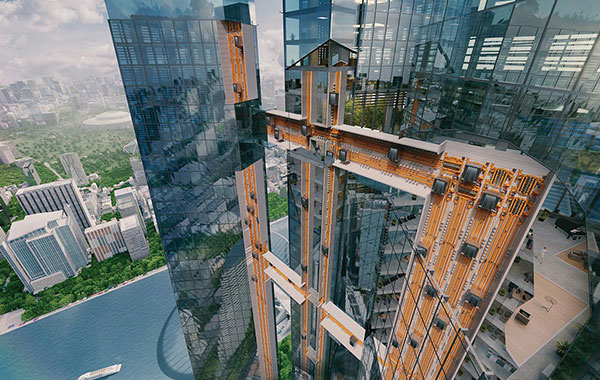Filter by
You must be a CTBUH Member to view this resource.

Aufzugstestturm
TK Elevator Test Tower, thyssenkrupp Test Tower, Power Tower, Tower of Light
Tower
Completed
2017
Observation / Industrial
All-Concrete
246 m / 807 ft
Proposed
Construction Start
Completed
Usually involved in the front end design, with a "typical" condition being that of a leadership role through either Schematic Design or Design Development, and then a monitoring role through the CD and CA phases.
The Design Engineer is usually involved in the front end design, typically taking the leadership role in the Schematic Design and Design Development, and then a monitoring role through the CD and CA phases.
Other Consultant refers to other organizations which provided significant consultation services for a building project (e.g. wind consultants, environmental consultants, fire and life safety consultants, etc).
Material Supplier refers to organizations which supplied significant systems/materials for a building project (e.g. elevator suppliers, facade suppliers, etc).
You must be a CTBUH Member to view this resource.
Usually involved in the front end design, with a "typical" condition being that of a leadership role through either Schematic Design or Design Development, and then a monitoring role through the CD and CA phases.
The Design Engineer is usually involved in the front end design, typically taking the leadership role in the Schematic Design and Design Development, and then a monitoring role through the CD and CA phases.
Other Consultant refers to other organizations which provided significant consultation services for a building project (e.g. wind consultants, environmental consultants, fire and life safety consultants, etc).
Material Supplier refers to organizations which supplied significant systems/materials for a building project (e.g. elevator suppliers, facade suppliers, etc).
2022 CTBUH Awards
12 September 2017 - CTBUH Research
23 June 2017 - Event

30 January 2020
Michael Cesarz, MULTI thyssenkrupp Elevator
The potential of ropeless elevators to change the way we experience urban space has been addressed by two research projects conducted by CTBUH and funded...
A collaborative design from architects Werner Sobek and Helmut Jahn, the Aufzugstestturm was inaugurated on Monday, December 12, 2016 and began testing high-speed elevators before the twisting facade was completed in the spring of 2017.
2022 CTBUH Awards
12 September 2017
CTBUH partnered with Guinness World Records to identify the commercial building with the fastest elevator speeds and longest vertical runs.
23 June 2017
The second meeting of the research team involved in “A Study on the Design Possibilities Enabled by Rope-Less, Non-Vertical Elevators” was held in Rottweil, Germany.
22 June 2017
CTBUH Germany held a symposium to discuss the role of technical and technological innovation and its effect on the various disciplines within the construction industry.
22 June 2017
The official unveiling of the MULTI elevator system, the first linear-motor elevator, was held at the thyssenkrupp Test Tower in Germany.
Subscribe below to receive periodic updates from CTBUH on the latest Tall Building and Urban news and CTBUH initiatives, including our monthly newsletter. Fields with a red asterisk (*) next to them are required.
View our privacy policy